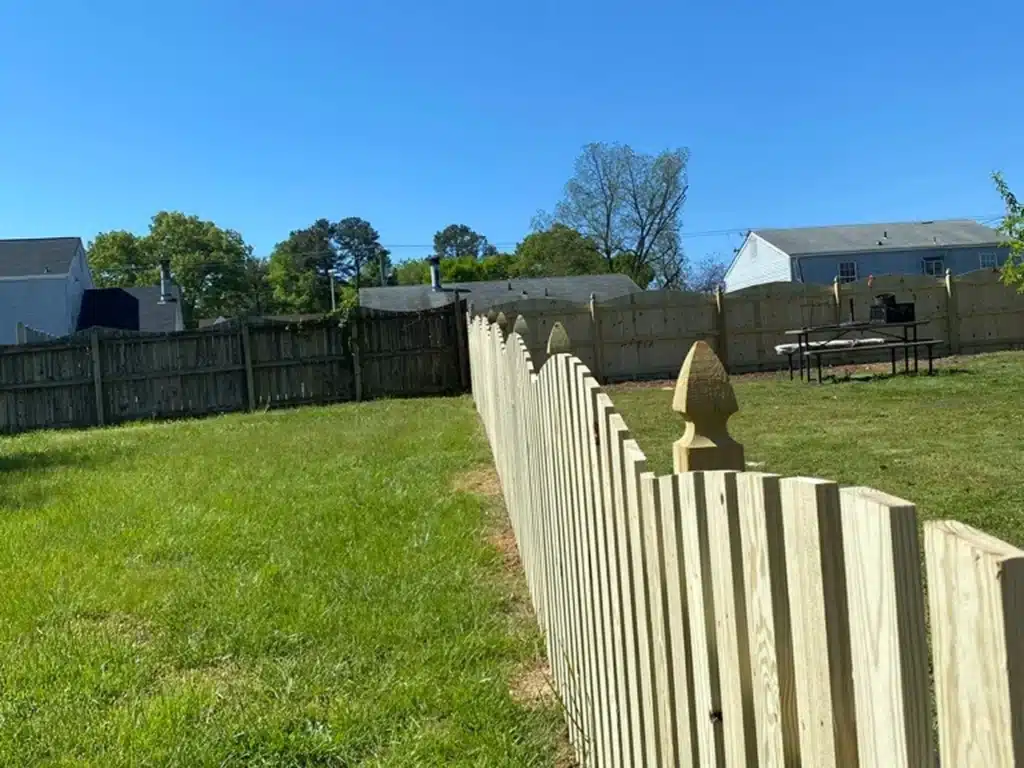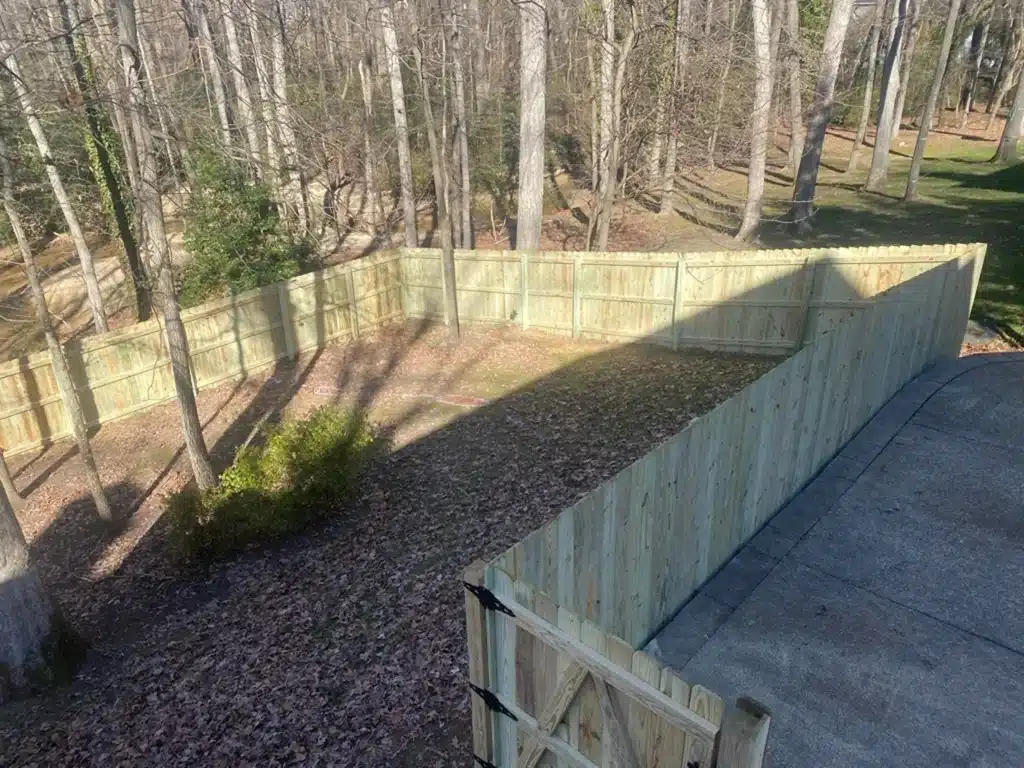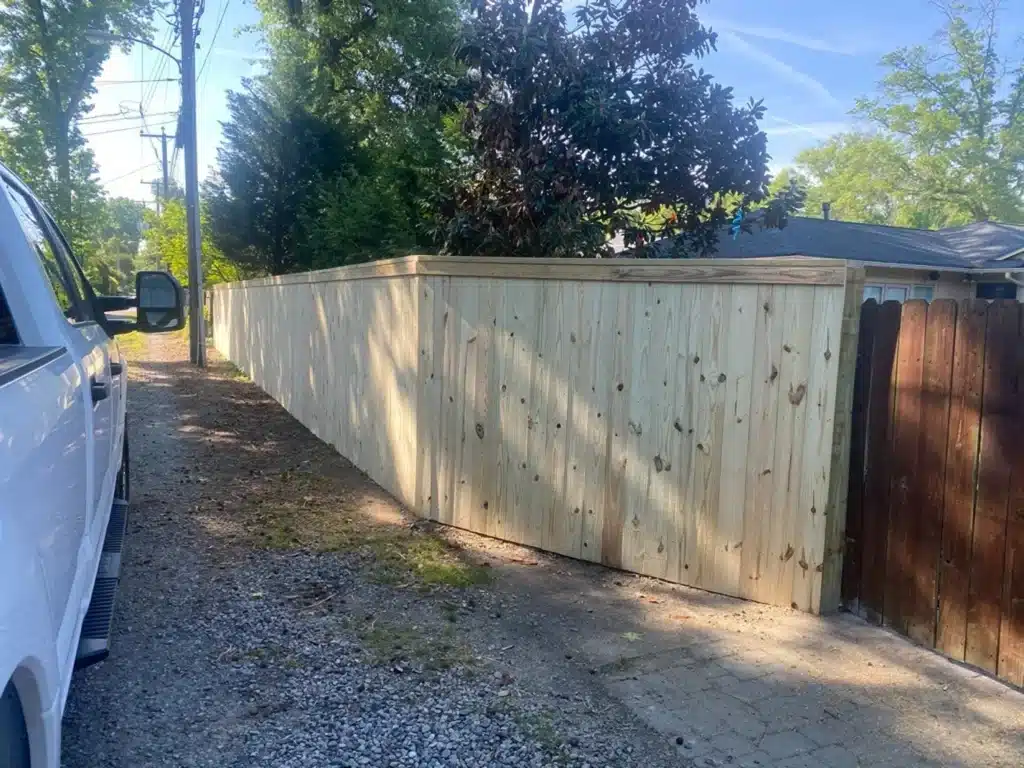Not every aging fence needs to be replaced. Often, a few targeted repairs and a day’s work can restore its strength and appearance. Other times, the damage runs deeper—hidden rot, loose posts, insects quietly undoing the structure from within. The tricky part is knowing when you’re throwing good money after bad.
That’s where this guide comes in. It’s not a sales pitch; it’s a reality check. You’ll learn how to inspect your fence, read the signs of real structural decline, and weigh whether repairs make sense or if you’re better off starting fresh with help from professional wood fence installation experts in Richmond who understand unpredictable weather and soil.
Why Fences Age Faster

Virginia’s capital is beautiful in spring—the smell of magnolia, the shimmer off the James River—but that same humidity is tough on wood. The clay-rich soil in much of Richmond holds moisture long after a rainstorm. Posts sink into that damp ground, soaking from the base up, where rot starts its slow work.
Add UV exposure from long summer days, and the protective oils in the wood begin to break down. What once glowed with fresh stain fades to gray and splinters at the edges. Out near Bellemeade Park, you can see it clearly—sun-exposed fences lightened several shades compared to those tucked in the shade of an old oak.
Then there’s the wild card: storms. A single summer squall with 40-mile-an-hour gusts can loosen an entire run of panels. Add carpenter ants and termites—the quiet saboteurs that love our warm, damp climate—and you’ve got the perfect recipe for decay. That’s why understanding how and where your fence is failing matters more than ever.
Quick Self-Inspection: How to Diagnose Fence Health

You don’t need fancy tools to tell whether your fence is holding strong — just a screwdriver, a few minutes, and a careful look around the yard.
Step 1: Start at the post base. This is where most problems begin. Insert a screwdriver into the post at ground level. If it sinks easily or feels soft, rot has likely compromised the post’s integrity.
Step 2: Test for movement. Give each post a gentle shove. Any wiggle means trouble — usually a cracked concrete footing or soil that’s shifted. Homeowners along Wright Ave and Ridgemont Rd know this drill all too well; water drains slowly there, keeping the ground soaked for days after heavy rain.
Step 3: Inspect the rails. Walk the length of your fence and look closely at the horizontal rails. Are they bowing or cracked? Are there darker stains spreading from nail holes? Tap them with the handle of your screwdriver — healthy wood sounds solid and sharp; decayed wood sounds dull or hollow.
Step 4: Check for insect signs. Kneel near the baseboards and look for sawdust, fine powder, or pin-sized holes. These are red flags for carpenter ants or termites quietly at work.
Step 5: Step back for the big picture. Now stand a few paces away and scan the fence line. Do certain sections lean forward? Are nails or screws pulling loose? Does the gate hang unevenly? These aren’t cosmetic issues. They’re early warnings that the structure is wearing out and may soon need more than touch-ups.
Repair or Replace? The Cost-Benefit Framework
When Repair Makes Sense
If the damage is small—maybe a cracked picket, a loose gate hinge, or one leaning post—repairing can be smart. Especially if your fence is under ten years old and still solidly set. Replacing a few posts or boards costs far less than rebuilding the entire stretch. And if the foundation’s strong, a quick stain refresh can make an older fence look remarkably new again.
When Replacement Is Smarter
But when rot runs deeper, patchwork becomes wishful thinking. If you can push a post and it moves an inch, or if multiple rails sag across the line, that’s structure, not surface. Add in insect damage or heavy warping, and replacement becomes a long-term investment rather than an expense.
A good rule of thumb: if repair costs hit 40% or more of a full rebuild, it’s time to replace. For perspective, small fixes might run a few hundred dollars; rebuilding a full property line fence can range into the low thousands but with decades of reliability ahead.
If you’re weighing materials, the related guide on best wood for fences in Richmond VA breaks down durability and weather resistance for both. Choosing right at the start saves a lot of future patching.
Safety and Warranty Considerations

A fence that looks tired might still stand tall but that doesn’t mean it’s safe. Loose posts can topple in wind or heavy rain, and gates that drag or sag could collapse under pressure. If kids or pets use the yard, stability isn’t optional.
Check your paperwork if you have it. Some builders and installers include limited warranties on materials or workmanship. Keeping photos of issues and documenting repairs can help you claim coverage later. Even without a warranty, early inspections and regular maintenance can extend your fence’s life for years.
And while safety’s often the motivator, replacing a failing fence also restores curb appeal—something every homeowner notices when property values climb.
How Professionals Evaluate Fences
A professional fence assessment goes beyond what you can see. Pros don’t just look; they listen, measure, and test.
They’ll start with post-depth checks, ensuring each base is seated properly in concrete and not sinking into soft ground. Next, they use moisture meters to test for hidden rot beneath the surface. You’d be surprised how often a post looks fine above ground but feels like a sponge beneath it.
Insect inspection comes next. A trained eye can spot termite or carpenter ant galleries that most homeowners overlook. Technicians may also use density testers to evaluate wood strength and identify where replacement is unavoidable.
If you’re curious about how wood fences hold up against moisture and pests long-term, the USDA guide to protecting wood fences offers practical, science-based insight on preventing decay and keeping wooden structures sound.
Choose Longevity, Not Shortcuts

Replacing a fence isn’t about giving up. It’s about choosing stability over quick fixes. Repairs have their place, but they can’t reverse deep structural decline or stop rot once it’s inside the post.
The goal is to make your yard feel secure again. A strong, well-built fence frames your property, keeps pets safe, and restores that quiet sense of order every homeowner wants after a long week.
If you’re unsure where your fence stands, or if you’d like a professional opinion before making a call, schedule an expert consultation or call 804-402-9980. A short visit and honest evaluation can save you money—and frustration—down the road.
Frequently Asked Questions
What’s the average lifespan of wood fences in Richmond?
In humid climates, wood fences typically last between 10 and 15 years with regular cleaning and sealing. Properties close to Blackwell and Midlothian Turnpike, where soil stays wetter, may see shorter lifespans unless fences are stained and inspected annually.
Can I prevent insects from damaging my fence?
Yes. Keep mulch and vegetation several inches away from fence bases and apply wood preservatives annually. Residents near Broad Rock Boulevard deal with high shade and moisture—prime pest conditions—so keeping airflow clear around posts helps deter ants and termites.
Do high winds mean I should repair or replace my fence?
It depends on what shifted. After severe storms, homeowners along Hull Street and Belt Boulevard often find a few loose pickets that can be repaired easily. But if entire sections lean or posts loosen within their concrete footing, replacement is the smarter, safer move before the next storm season hits.
Are fence repairs covered by homeowner warranties?
Coverage varies. Normal weathering isn’t, but sudden impacts—like fallen limbs—may qualify. Many residents around North 29th Street keep photos and receipts handy for claims, which helps confirm what’s covered before beginning major repairs or replacements.
